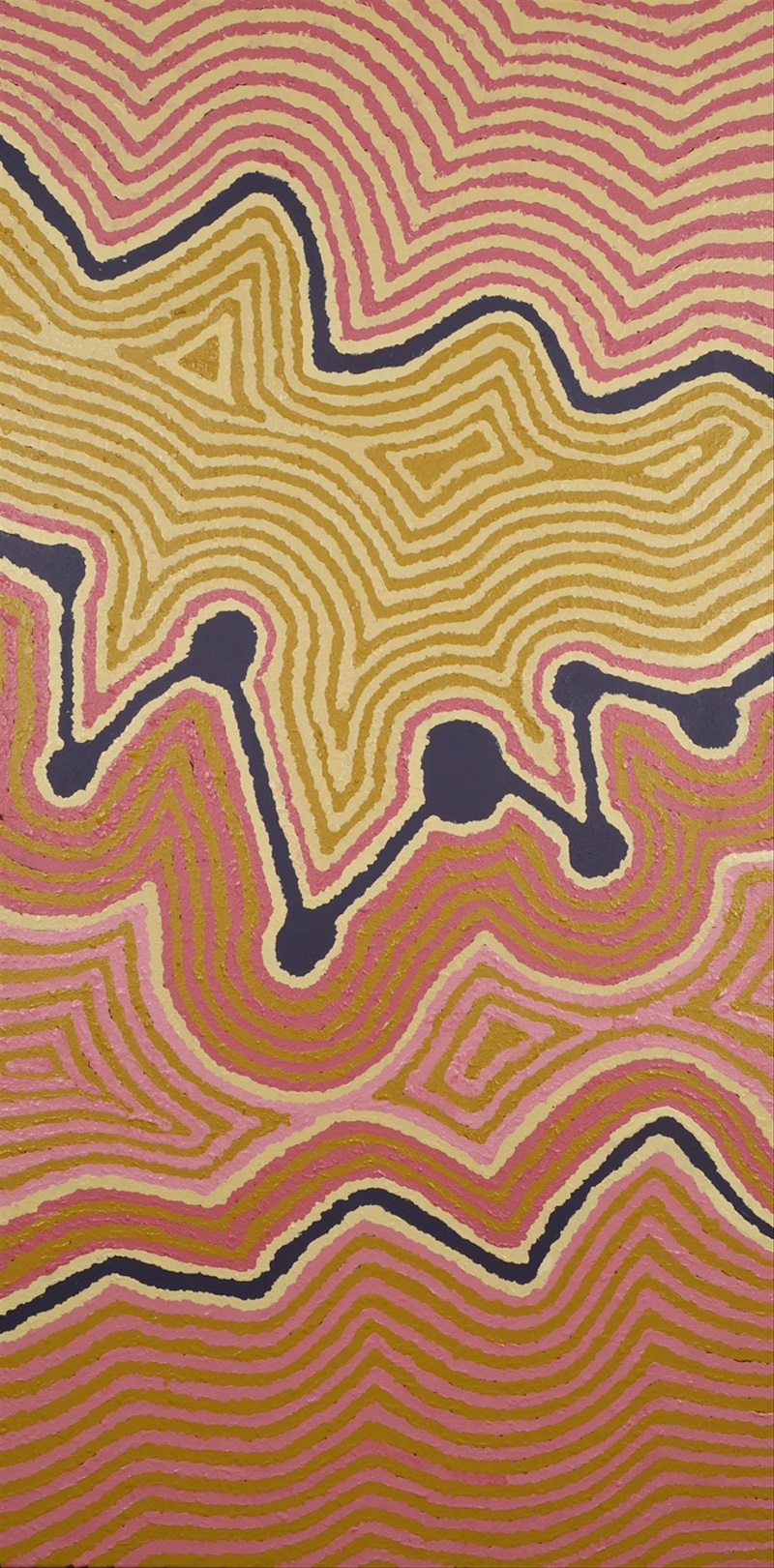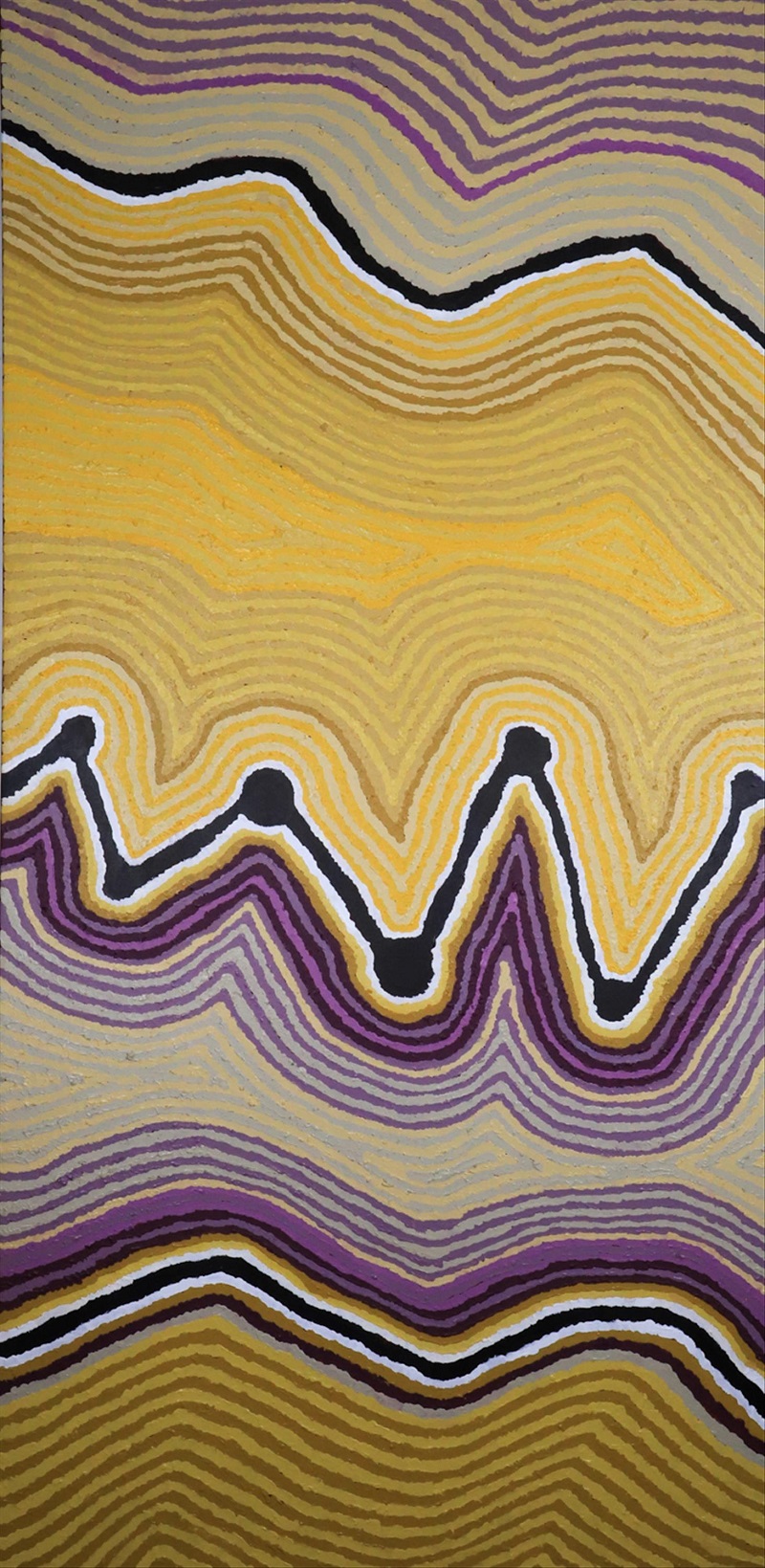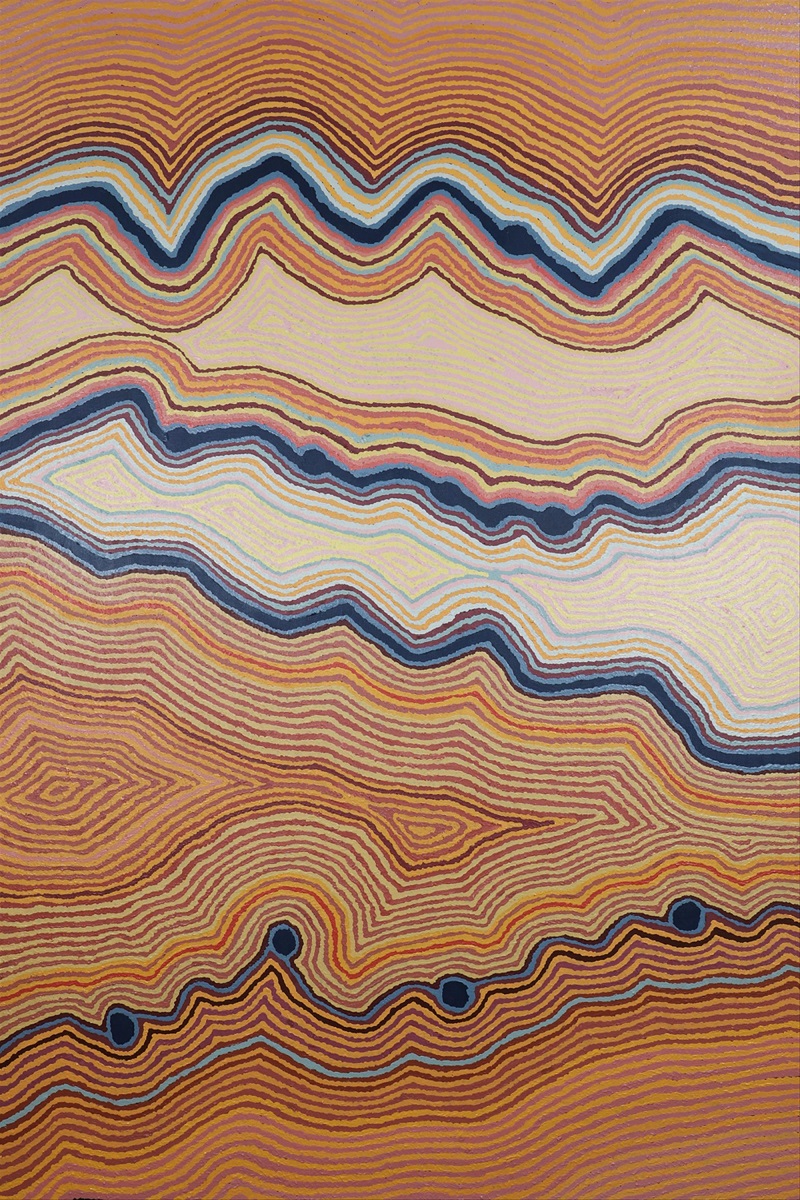
Born
1946, Punturtjarrpa, Gibson Desert
Location
Nynmi, Gibson Desert
Community
Wirrimanu (Balgo), WA
Skin
Tjungurrayi
Language
Kukatja, Manyjilyjarra
Country
Nynmi, Gibson Desert WA; Pippar, WA
Helicopter (Joey) Tjungarrayi
Read Helicopter’s biography
See available works by Helicopter in our shop
Biography
Helicopter Joey Tjungurrayi is well recognised as one of Warlayirti Artists’ leading artists and is a great ambassador for the Art Centre, painting with Warlayirti Artists since the early ‘nineties. Born at Nynmi, west of Kiwirrkurra in Western Australia, Helicopter was brought up in a traditional nomadic lifestyle, learning from childhood the location of water sources and how to hunt for bush food. The time spent moving through country as a young boy has had a profound and lasting effect on Helicopter’s artistic process and practice. As James Cowan writes in Balgo: New Directions 1999 of Balgo artists “…their work is grounded in a quintessential act of reverie.” Helicopter’s approach and dedication to the act of painting is evidence of the reverence which he holds for his country.
My father got [my spirit] from [Nyakin], and my mother too… They were just taking me around them Countries, my mother and father. They took me everywhere. (Carty, J. Yiwarra Kuju, The Canning Stock Route, 2010)
In 1957, the young Tjungurrayi became seriously ill while walking with his family on country: he was taken to the Old Balgo Mission for medical attention in a helicopter that had been doing mining exploration work in the area. The first helicopter that many of the people had seen, this important event is how he got his very memorable name.
Helicopter worked at the mission in Balgo, drilling for water, cutting timber for fencing, fixing the windmill, and travelled widely during these days to pick up supplies from the Kimberley ports. It was also at Balgo mission that Helicopter met and married Lucy Napanangka Yukenbarri. Together they had six children and grew up another two of Napanangka’s children from her first husband. They were together until Napanangka died in 2003. Two of his daughters, Christine Yukenbarri and Imelda (Yukenbarri) Gugaman, have become successful artists in their own right.
In the early 1990s Helicopter painted with Napanangka, not seeking any acknowledgement, and then in 1994 Helicopter started painting in his own distinctive linear style. Emanating from the central feature of a tjurnu (soak water), Helicopter’s works are predominantly created through a rhythmical and methodical application of thick paint, as the artist dots and drags the brush along the linen, creating extended lines, parallel lines that represent the tali (sand hills) that dominate his father and mother’s country. Tjungurrayi can be found on most days sitting on the Art Centre veranda facing in the direction of his country. He gazes southward between brush strokes as if those distant tjurnu and tali were visible shimmering on the horizon. When asked about his painting, he will often motion fondly towards the Great Sandy Desert “good country, my country”.
In 1999 Helicopter started to gain recognition, he had his first solo exhibition, and was a finalist in the NATSIAA and Alice Prizes. In 2002 he was a NATSIAA finalist for the second time. Helicopter has had six solo exhibitions during his career, two of which were alongside his late wife, Lucy Yukenbarri. Helicopter has travelled interstate and overseas for exhibitions of his paintings, including London, Amsterdam, and a trip to Tokyo, Japan in 2010 where he lead a team of Warlayirti’s artists to paint a brand new Audi as part of the Motika project. He continues to participate in group exhibition and his art features amongst some of the most significant collections of Aboriginal art across Australia and overseas.
In recent years Helicopter developed cataracts on his right eye, which had a profound effect on his eyesight. His vision deteriorated but his dedication to recording culture and creating art remained steadfast: he walked each morning to the art centre escorted by his pack of dogs and felt his way into his chair. As he painted he instinctively pulled the brush across the linen as if singing the paint into tali and tjurnu, feeling the colours echo his memory of country. Towards the end of 2015 Helicopter travelled away from Balgo for eye surgery. It was successful in restoring a good part of his vision, and with his clearer vision returned, so did a more defined application of paint. Helicopter has regained his confidence, experimenting with contrasting colours and playful designs. Helicopter is a Maparn (traditional healer) and is an active Senior Lawman and Singer.






